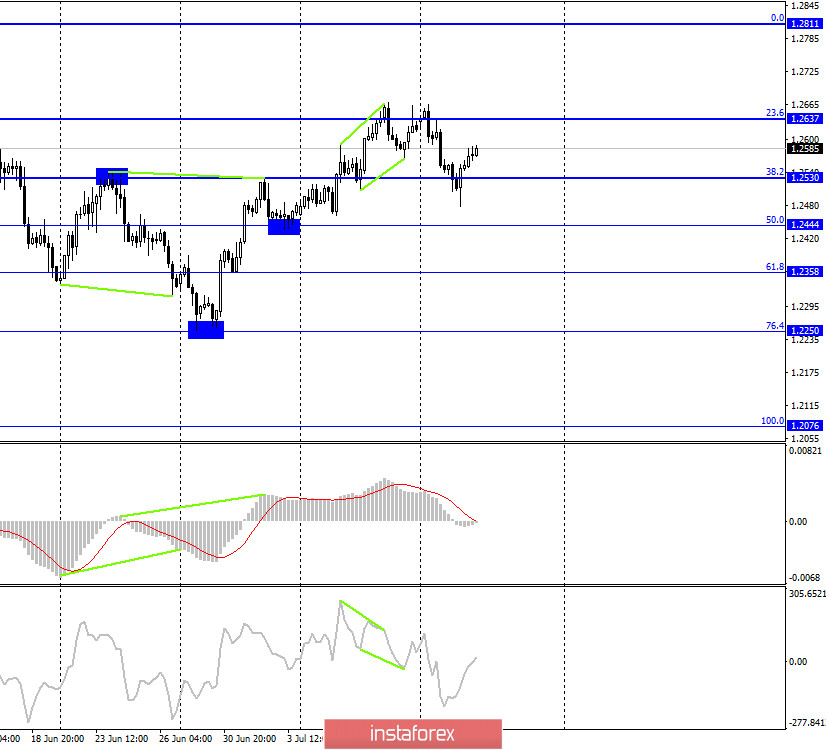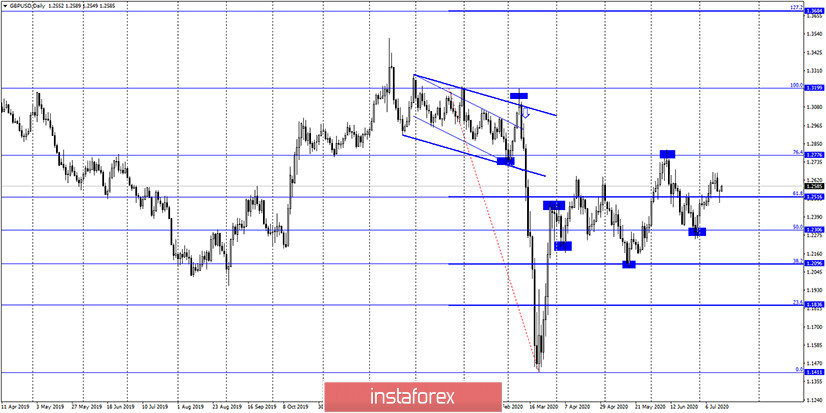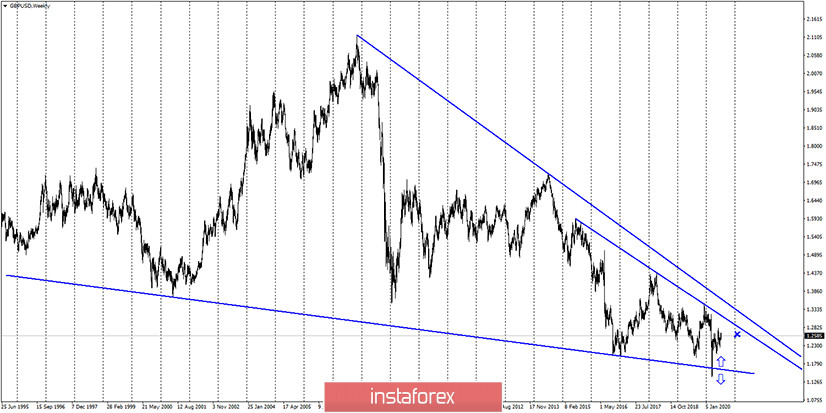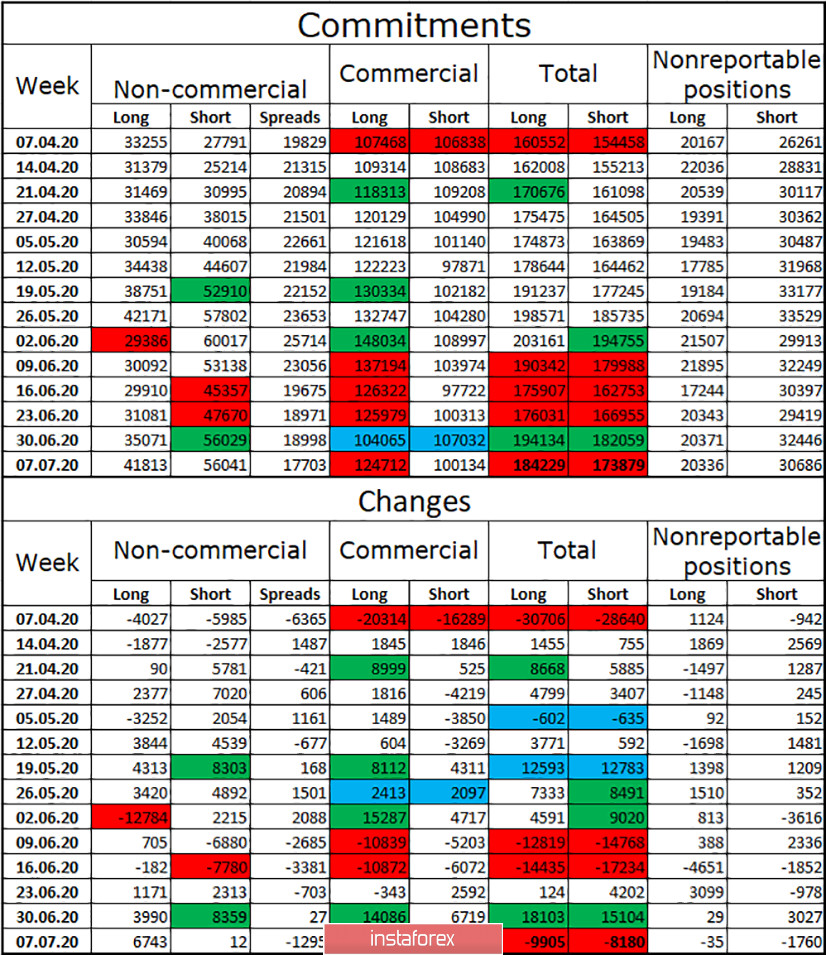GBP/USD – 1H.

Hello, traders! According to the hourly chart, the quotes of the GBP/USD pair, after fixing under the upward trend corridor, performed a reversal in favor of the British dollar and began the growth process, despite the fact that the mood of traders is now characterized as "bearish". From the UK, only negative news came in yesterday. Gross Domestic Product grew by just 1.8% in May, although it was expected to grow by 5%. Thus, the UK economy, weakened not only by the coronavirus, quarantine, crisis, but also by Brexit, clearly shows a weaker recovery rate. In addition, yesterday, several medical scientists predicted a new wave of coronavirus in the UK, which will presumably begin in the autumn and last until next summer. I have already said that among all European countries, it is the British economy, along with the Italian and Spanish, that has suffered the most. If the country is waiting for a new wave, which, according to various estimates, can take up to 120 thousand lives, it will be a new blow to the British economy.
GBP/USD – 4H.

On the 4-hour chart, the GBP/USD pair performed a reversal in favor of the British currency near the corrective level of 38.2% (1.2530) and began the growth process in the direction of the corrective level of 23.6% (1.2637). There are currently no trend lines or trend corridors on both of the most lower charts, which makes it a little difficult to determine the mood of traders. The rebound of the pair's exchange rate from the Fibo level of 23.6% (1.2637) will work in favor of the US dollar and resume the fall in the direction of the corrective level of 38.2% (1.2530).
GBP/USD – Daily.

On the daily chart, the pair's quotes secured above the corrective level of 61.8% (1.2516). Thus, the growth process can be continued in the direction of the Fibo level of 76.4% (1.2776). However, this option no longer supports the hourly chart.
GBP/USD – Weekly.

On the weekly chart, the pound/dollar pair performed a false breakdown of the lower trend line and rebound from it. Thus, until the pair's quotes are fixed under this line, there is a high probability of growth in the direction of two downward trend lines.
Overview of fundamentals:
On Tuesday, the UK released a report on GDP (+1.8% in May) and a report on industrial production (-20.0% y/y in May). Thus, both reports were extremely weak. Nevertheless, the British pound fell only in the first half of the day, and managed to recover in the second, although the report on us inflation is unlikely to affect the mood of traders.
News calendar for the US and UK:
UK - consumer price index (06:00 GMT).
US - change in industrial production (13:15 GMT).
On July 15, the UK has already released a report on inflation for June, which was 0.6% y/y and 0.1% m/m, which is slightly higher than traders' expectations. The British pound is growing in the morning, although this report can hardly be described as strong.
COT (Commitments of Traders) report:

The latest COT report again showed an increase in the number of long-term contracts among the "Non-commercial" group. However, if the last report also showed a strong increase in short contracts, the report for July 7 showed that speculators opened only 12 short contracts in a week. Thus, if you try to track the trend, since the beginning of June, speculators are increasing long, but the number of short-contracts in their hands has decreased over the same period of time by 4 thousand. On the face of the "bullish" trend, which completely coincides with what is happening in the market. At the same time, the total number of both groups of contracts for the reporting week decreased by 18 thousand, mainly due to the "Non-commercial" group, which actively got rid of both groups of contracts.
Forecast for GBP/USD and recommendations to traders:
I recommend selling the pound again with a target of 1.2444, if the close is made below the level of 1.2530 on the 4-hour chart. I recommend opening purchases of the pair with the goal of 1.2637, if the rebound from the level of 1.2530 is made. However, I can recommend waiting for the formation of new graphical patterns (trend lines or corridors) to make it easier to determine the trend. This is not the case now.
Terms:
"Non-commercial" - major market players: banks, hedge funds, investment funds, private, large investors.
"Commercial" - commercial enterprises, firms, banks, corporations, companies that buy currency, not for speculative profit, but to ensure current activities or export-import operations.
"Non-reportable positions" - small traders who do not have a significant impact on the price.





















